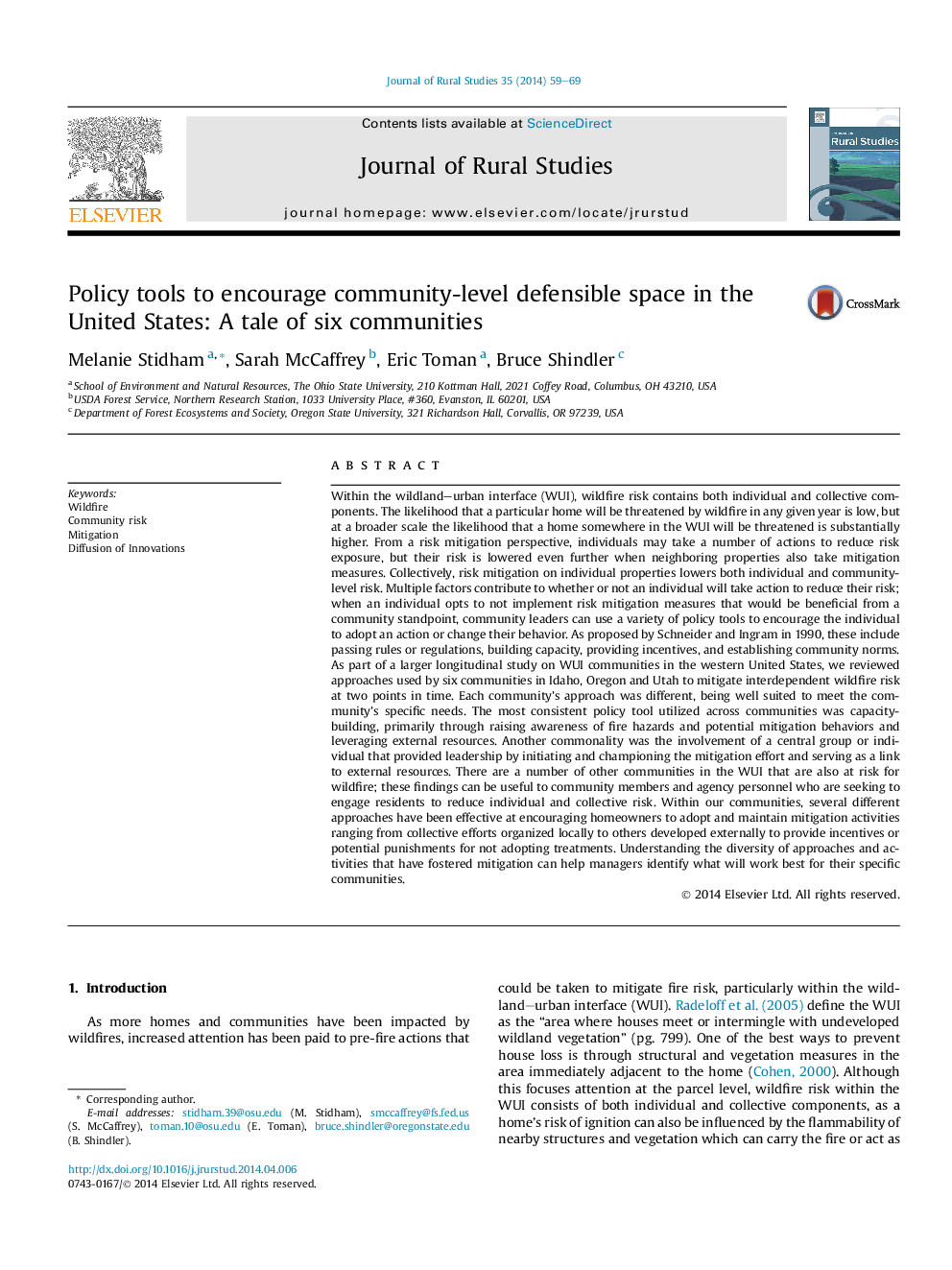| کد مقاله | کد نشریه | سال انتشار | مقاله انگلیسی | نسخه تمام متن |
|---|---|---|---|---|
| 92485 | 159975 | 2014 | 11 صفحه PDF | دانلود رایگان |
• We conducted qualitative interviews with individuals in six western US locations.
• We examined different approaches to reducing wildfire risk in the WUI.
• Approaches were multi-faceted, tailored to address specific community needs.
• While different, each approach was successful, indicating a range of possibilities.
• Capacity building was the most commonly used of four policy tools.
Within the wildland–urban interface (WUI), wildfire risk contains both individual and collective components. The likelihood that a particular home will be threatened by wildfire in any given year is low, but at a broader scale the likelihood that a home somewhere in the WUI will be threatened is substantially higher. From a risk mitigation perspective, individuals may take a number of actions to reduce risk exposure, but their risk is lowered even further when neighboring properties also take mitigation measures. Collectively, risk mitigation on individual properties lowers both individual and community-level risk. Multiple factors contribute to whether or not an individual will take action to reduce their risk; when an individual opts to not implement risk mitigation measures that would be beneficial from a community standpoint, community leaders can use a variety of policy tools to encourage the individual to adopt an action or change their behavior. As proposed by Schneider and Ingram in 1990, these include passing rules or regulations, building capacity, providing incentives, and establishing community norms. As part of a larger longitudinal study on WUI communities in the western United States, we reviewed approaches used by six communities in Idaho, Oregon and Utah to mitigate interdependent wildfire risk at two points in time. Each community's approach was different, being well suited to meet the community's specific needs. The most consistent policy tool utilized across communities was capacity-building, primarily through raising awareness of fire hazards and potential mitigation behaviors and leveraging external resources. Another commonality was the involvement of a central group or individual that provided leadership by initiating and championing the mitigation effort and serving as a link to external resources. There are a number of other communities in the WUI that are also at risk for wildfire; these findings can be useful to community members and agency personnel who are seeking to engage residents to reduce individual and collective risk. Within our communities, several different approaches have been effective at encouraging homeowners to adopt and maintain mitigation activities ranging from collective efforts organized locally to others developed externally to provide incentives or potential punishments for not adopting treatments. Understanding the diversity of approaches and activities that have fostered mitigation can help managers identify what will work best for their specific communities.
Journal: Journal of Rural Studies - Volume 35, July 2014, Pages 59–69
